
30 Lighting Tips for Seniors
Search
How Proper Lighting Will Help Your Aging Eyes Regain Their Youthful Performance?
If you are like most of us, your vision begins to decline around age 40. An aging pair of eyes is only half as effective as they once were. Older eyes have trouble seeing distances, distinguishing colors and looking at small fonts or other details. Sensitivity to glare that younger people do not mind can be a major setback. These effects of aging will continue to hamper your vision with each birthday. This is why you must ensure that elder eyes get the amount of light that they need to see clearly. It’s frustrating not being able to see as well as we did in our youth. Poor eyesight can mean reduced quality of life for seniors, but you are about to discover some valuable tips about how to overcome mother nature. Of course you should see your optometrist for an eye exam and keep your prescription current. But what next? Proper lighting becomes the most important tool to help seniors maintain their active lifestyle. Inadequate lighting makes it harder to do daily tasks and can be really unsafe. Don't despair! With a few adjustments, seniors can see better, live safer, more independent lives. First let’s look at what is happening to our eyes as we age.
How our Eyes Change as we Age
Medical science has documented changes to our vision as we get older:
- Colors distort - Your eye lenses begin to yellow and absorbs a higher amount of blue wavelength light, creating distorted colors. Have you noticed that Green and Blue are harder to distinguish and blues start to look gray?
- Harder to focus - our lenses will also harden and become more rigid, so our eyes don’t focus as quickly or accurately as they used to.
- Less light gets in - Your pupils get smaller and let in less light. The older you get the more pronounced this becomes. By the time you reach 80, you need 6 times more light than you did in college!
- Light scatters - Your corneas become more opaque and less light gets in, requiring better lighting. Fat deposits scatter the light, making it harder to recognize familiar objects.
- Slower to adjust - Your eyes’ ciliary muscles weaken and an increased rigidity and hardening of the lens reduce our ability to focus and to adjust to different light levels easily.
Sounds pretty bleak, huh?
It doesn’t have to be. With the right tools and information, seniors can continue to see better and live happier lives.
How Much More Light do Elderly Eyes Need?
Seasoned citizens need more light, (at age 65 we need twice as much light to see as well as we did at age 20) and are much more sensitive to glare, so lighting must not only be plentiful, but well shielded. The table below shows recommended levels of illumination. In each case a range is indicated—the low value being for young people under 25, the middle value for 25-65 year olds, and the high value being for older persons over 65.
| Area or activity | 20 year old | 40 year old | 60 year old | 80 year old |
| Hallways & Walkways | 21 [2] | 43 [4] | 86 [8] | 129 [12] |
| Conversation | 27 [3] | 54 [5] | 108 [10] | 161 [15] |
| Bathroom / Makeup | 161 [15] | 323 [30] | 646 [60] | 968 [90] |
| Reading | 269 [25] | 538 [50] | 1076 [100] | 1614 [150] |
| Kitchen Counter | 404 [38] | 807 [75] | 1614 [150] | 2421 [225] |
| Hobbies (Sewing, model building) | 538 [50] | 1076 [100] | 2152 [200] | 3228 [300] |
So when shopping for lighting, be sure to find out the lumen output of your fixtures. The new "Lighting Facts" label will show lumens. Remember lumens are a measure of total light emitted by the bulb, not necessarily the light level hitting your book or needlework. The further you move from the light source, the more the light level decreases. Also, keep in mind you don't have to get 100% of your light from one source. So If your total light need it 1300 lumens, and you like a lamp that delivers 1100 lumens, it might work well for you if you can supplement it with good ambient light in the room.
30 Lighting Tips Every Senior Must Know
-
 Increase Ambient Light levels – Your aging eyesight need 2-6 times more light than it did when you were young. Ambient light is the “global” lighting that illuminates the entire room. A typical ambient source is the chandelier in your dining room, which disperses light all around the room. You need more of it as you age. Keep reading for great ways to increase ambient light. (Budget Alert - Many seniors are on a fixed income and worried about increasing their electric bill. If so, consider switching to energy-saving CFL or LED bulb. A 25 watt CFL gives you 4 times more light than a normal 25w incandescent, where a 25w LED gives you 6-8 times more light!)
Increase Ambient Light levels – Your aging eyesight need 2-6 times more light than it did when you were young. Ambient light is the “global” lighting that illuminates the entire room. A typical ambient source is the chandelier in your dining room, which disperses light all around the room. You need more of it as you age. Keep reading for great ways to increase ambient light. (Budget Alert - Many seniors are on a fixed income and worried about increasing their electric bill. If so, consider switching to energy-saving CFL or LED bulb. A 25 watt CFL gives you 4 times more light than a normal 25w incandescent, where a 25w LED gives you 6-8 times more light!)
-
Check the wattage limits of your light fixtures to see if you can increase the wattage. If so, get new bulbs, but NEVER exceed the maximum wattage of your fixture! Say your maximum is 60 watts and you already have 60w incandescent bulbs installed. Consider switching to Compact Fluorescent (CFL) or Light Emitting Diode (LED) bulbs because a 15 watt CFL or a 10 watt LED will give you the same light as a 60 watt incandescent bulb. So you could get up to 4 times more light by switching to CFL and 6 times more light by changing to LED. CFL’s are hard to dim and LED’s can be expensive, and both are hard to adapt to smaller candelabra threadings, so these may not work in every situation.
-
 Add a lamp – A quick and easy way to increase ambient lumens is to add a table or floor lamp. In the industry, we call them “portables” because they are easy to move where you need them. No re-wiring required.
Add a lamp – A quick and easy way to increase ambient lumens is to add a table or floor lamp. In the industry, we call them “portables” because they are easy to move where you need them. No re-wiring required.
-
Let the sun shine in! - The most powerful source of ambient light is the sun, which faithfully delivers up to 10,000 footcandles of light, or over 107,000 lumens! So open up curtains and blinds. Sure this only helps during the day, and you still need to consider improving ambient light at night, why not use the best source of natural light this world has ever known? (If you are concerned about nosy neighbors, consider “top-down” shades or blinds that open at the top.) You may even consider skylights or “solar-tubes” to let in more natural light.
-
Lighten up your Walls – Dark walls absorb light and can require up to 4 times more light than off-white walls.[1] So repaint dark walls using a lighter matte finish to avoid glare. Look for paint with a Light Reflective Value (LRV) of 70-80 for walls and 80-90 for ceilings. The higher you can get, the brighter your room will look!

-
Embrace Layers – Since it is difficult to increase light levels sufficiently from one light source, you should try to add as many layers of light as you can. Think of wall sconces, light valences, recessed lights, ceiling lights and portables. It is hard to get all your light just from lamps alone, so maximize your other lighting sources.
-
Avoid Over-Reliance on Recessed – Recessed lights are great as one of several layers in your room, but if they are you only source of light, they will cause shadows and make any activity more difficult and dangerous.
-
Add Dimmers – Seniors need the ability to crank up the lumens when they need it but you will appreciate the ability to tone it down when you are relaxing. Dimmers work best with incandescent bulbs and some LEDs. Adding dimmers on lighting fixtures give us control over the amount of light at any given time. For instance, to watch TV, keep the light low. For reading, you can turn it up, and maybe add a task lamp.
-
Light Controls – Seniors should not be stumbling through the dark to turn on a lamp. Look for either motion active lights or prominent wall switches so you can get out of the dark as quickly as possible. Be sure to get lighted switched to help guide you in the dark! Consider the future possibility of using a wheelchair. It is very crucial to make the light switches for a sitting person within arms reach or lower it for about four feet above the floor to eliminate the hassle of reaching for it.

-
Reduce Glare – As you increase your light levels, you increase the risk of creating glare. Seniors are especially sensitive to glare because the light will scatter more in aging eyes so seniors see less detail and glare can obscure objects in the room. Ways to reduce glare include:
- Use light fixtures with opaque shades that help disperse the light, avoiding glare. Glare-free shades can be made of glass or fabric and they should conceal direct line-of-sight to the bulb.
- To avoid direct line-of-sight to your light bulb, get a good-fitting lampshade for all your lamps. Strive to avoid direct sight of the bulbs.
- To minimize glare, avoid shiny surfaces when replacing countertops, tables, lighting, framed art, etc.
- Use matte paint instead of gloss to reduce glare.
-
Keep light levels uniform – Increased ambient light will give seniors more uniform light within a room. Aging eyes have difficulty adjusting to sudden changes in light levels, so your goal is to keep light levels uniform in your frequently used adjoining rooms.[2] Avoid dramatic changes in light levels from room to room.
-
Safety first – Poor lighting will dramatically reduce depth perception for seniors. That’s why it is a real safety concern for “danger zone” areas like Stairways, Bathrooms, and Kitchens, where mis-judgements in depth perception can be most harmful. So pay extra attention when reading those “room advice” sections below. As we learned earlier, just adding more light won’t make it safer unless that light is free from glare and shadows, which obscure details and make navigating more difficult. Glare can fool seniors into thinking the area is wet, and shadows on the floor appear to be lower than they actually are.
-
Add Task Lighting – Seniors love to stay active with crafts and hobbies. Whether you love reading, knitting, sewing, woodwork, or philately, most hobbies require focus and hand-eye coordination that is aided by better lighting. We have some great ways to improve your past-time:

- If possible, move your crafts to a well lit room. Remember that the sun is the best source of light!
- Find a portable task lamp. If you have a nearby table, get a desk lamp, if not a floor lamp will be your best choice. The best task lamps give you at least 1000 lumens of light. So by adding 1000 lumens to the room’s ambient light level, you should get over 1500 lumens, which is strong enough for 80 year old eyes. To find a lamp with at least 1,000 lumens, be sure it is 100 watts (incandescent), 26 watts (fluorescent or CFL), 12 watts (LED), or 75 w (halogen). (technically we should focus on lux, which is the light intensity delivered to your handiwork, but since this really complicates the calculation, we will use lumens.)
- Be sure your task lamp is portable, and flexible so you can put the light exactly where you need it. Also be sure your eyes are shielded from direct view on the bulb.
- Look for a light that is at least 80 CRI (Color Rendering Index) which will let you see true colors and help you distinguish between blue and green.
- It’s nice to have a task lamp with a dimmer or low/high setting, but in truth you are using it to all lumens. You likely will use it on high most of the time, and if you choose fluorescent or LED, you are already saving energy, so pay more attention to total light output in lumens than
- If you need further help choosing a task lamp, read our Task Lighting Guide
- By the way, philately is serious stamp collecting. Thanks for paying attention!
-
Warm or Cool? – In degrees Kelvin that is. Should you choose bulbs that are warm yellow, or cool blue? The “color” of your light source is measured in “degrees Kelvin”. 2500-3500 is warm yellow, like a traditional incandescent bulb. Full spectrum lights appear blue/white and are rated at between 5,000 to 6,500 degrees K. For Ambient lighting, senior should stay in the “warm” range, from 2900-3500. This range is comfortable for relaxing because it softens the room, but may hide the object’s true color and add a yellow tint. Often women prefer warmer colors. Cooler blue/white raise attention. So look for cooler 5000-6500 degrees for your Task lights. If you are having trouble in choosing the right bulbs, you can visit our Light Bulb Buying Guide for more tips on "lamps" as the pros call bulbs.
-
Diet & Supplements – OK, this is not lighting advice, but you can really help rejuvenate your eyesight by making sure you are eating your veggies. Didn’t mom used to say eat carrots to help our eyes? Sure beta-carotene in carrots gets converted to eye-saving vitamin A in the liver, but aging eyes need more help. Do your best to eat more dark, leafy, green vegetables since most of us don’t get enough. [3] Kale, swiss chard, spinach and broccoli great options rich in Lutein and Zeaxanthin. If you can’t work these into your diet every day, consider supplements.
- Bonus Tip: Cataract Surgery is often a blessing to restore your lenses later in life! Cataracts are the most common visual impairment for seniors yet it is very treatable. Many seniors can throw away their glasses with this restorative surgery. Ask your opthamologist if you would benefit from new lenses. Be careful because more advanced cataract surgery is often not covered by insurance, even medicare. But if you can afford it, you can join the 3,000,000 happy patients who benefit each year.
Rooms with Special Lighting Needs for Seniors
5 Bonus Tips:
-
Stairways and Porches – Anytime seniors are changing elevation, the chance of a fall and the severity of that fall increase substantially. So let’s get those stairways well lit.

- Check for adequate light levels at the top and bottom landings and along the entire stairway. Falls from higher up are more dangerous, so ensure extra light levels at the top of the stairs.
- Consider stair lights or “theatre” lights if you can get access for wiring them. For indoor use, there are several battery powered, motion sensitive LED stairway light options.
- If you have a lower railing, consider mounting a LED rope light on the bottom of the railing, to give you light directly on the stair treads
- Layer a combination of decorative and recessed lights to fully light up your front entrance. Friends will be able to read your house numbers and there will be no dark places for burglars to lurk.
- Kitchen Lighting – Great kitchen lighting is important for everyone, since we spend so much time there, but especially for seniors who need to read recipes, labels and prescription directions. Extra kitchen light will help reduce food preparation accidents.

- Task lighting is especially important in the kitchen. The best way to add this is with LED under-cabinet lights. Task lighting is especially important in the kitchen. The best way to add this is with LED under-cabinet lights.
- If you have recessed lights, be sure to use them to add more ambient light. Recessed are difficult to add after initial construction and are of limited usefulness as task lighting because they will produce shadows if not perfectly positioned.
- Consider a light valance or above-cabinet rope lights to increase indirect ambient light levels.
-
Bathrooms – Lighting the bathroom is important to prevent accidents and to give plenty of light to keep you looking your best.

- Bathrooms have lots of shiny surfaces, so do your best to avoid glare. Point vanities UP so you get more indirect light.
- Light from both sides of the mirror is best to avoid shadows on your face.
- Be sure to have a dimmer so you don’t blast yourself with light during trips in the middle of the night.
- We always recommend using an abundance of light inside the bathroom to avoid accidents and have excellent vision.
-
Outdoor/Garage – Be sure to have quality task lights in your project area. If you live in colder climates, CFL bulbs will take a long time to warm up, so upgrade these to LED if you have your garage lights on frequently or incandescent if you only use your garage occasionally. Outdoor light fixtures are also vital for an elderly person’s eyes for secure footing. All entrances and exits should be bathed with enough light for the benefit of aging eyes. It would be good to choose lighting fixtures that automatically light up when it gets dark to save the senior citizen from the trouble of remembering to switch them on. Or if you prefer, you can go for the fixtures with motion detection technology for added security and safety.

- Bedroom - Be sure to have plenty of light available for reading in bed. Table lamps on each night stand bright enough for reading and general lighting in the bedroom will cover both task and ambient lighting. Be sure to have a switch within easy reach so you are not fumbling in the dark for the switch.

Is your Home’s Lighting “Senior-Friendly”?
Because deterioration of vision is gradual, it is a good idea to re-evaluate your lighting every few years as you age. The need to upgrade lighting can be more sudden if you have a senior family member moving in with you. Requirements for 60-70 year olds may change the entire architecture of the house, or will certainly lead to some fine tuning like ramps, grab-bars and many more. [4] Lighting can get overlooked. Is your lighting ready for aging eyes? Find out with this great checklist| YES / NO | |
| YES / NO | |
| YES / NO | |
| YES / NO | |
| YES / NO | |
| YES / NO | |
| YES / NO | |
| YES / NO | |
| YES / NO | |
| YES / NO |
If you got 10 “Yes” answers, congratulations, your home's lighting is ready for older eyes. All of these checklist items are essential for home safety, so be sure to remedy them as quickly as possible.
Glossary of Technical Terms used in this article
Ambient lighting - is the overall light level that is “broadcast’ throughout the room. Ambient light is useful for moving about safely, visiting with friends, and to make sure we don’t trip on the coffee table! The sun is a great source of ambient light, but it only helps when it is shining. Ambient light usually comes from ceiling fixtures and is supplemented by lamps, sconces and architectural light.
Task lighting – provides more intense light concentrated in a specific area. The purpose of task lighting is to help us perform visual tasks like knitting, reading sewing, building models and cutting food.
Accent light - is mainly used to highlight keepsakes like family portraits, artwork, trophies, special accents or interesting architectural features. Accent lights provide contrast and help with depth perception.
LRV - Light Reflective Value is a measure of light that is reflected from a surface when illuminated by a light source. LRV is often seen on paint swatches and is used by designers to determine sufficient light levels.
Color Rendering Index (CRI) - measures of the ability of a light source to reveal true colors faithfully in comparison with the perfect natural light source. Seniors should look for bulbs and lamps with CRI of 80 and above, which will especially help distinguish blue and green.
Footcandle – the light received on a surface by a one-candela source one foot away. A foot-candle equals one lumen per square foot = 10.76 lux.
Lumen- The amount of light a bulb emits in all directions. Aka "luminous flux", a lumen has become the standard way to compare incandescent, LED, and CFL light sources. One lumen per square foot = one footcandle = 10.76 lux.
Lux - Lumens spread out over a given area. 1 lumen = 10.76 lux. Lux are probably a better way to make sure you have sufficient lighting for tasks, but since measuring lux accurately requires photometers few of us have, most comparisons use lumens. (A full moon = 1 lux, office lighting = 500 lux, Direct sunlight =50,000 lux)
Compact Fluorescent (CFL)- Small fluorescent bulbs which often can be used in a standard medium-base socket. CFL's use 20-40% less electricity than incandescent bulbs and are color adjusted to produce light close to real sunlight.
LED- A Light Emitting Diode, historically used as small indicator lights on electronic devices and increasingly in higher power applications such as flashlights, desk lamps, and light fixtures. LEDs are very efficient, fully dimmable, and can even change colors.
References
[1] Light, Its Use and Misuse, Illuminating Engineering Society, 1912 p. 17
[2] Lighting Your Way to Better Vision, IES.org, 2009 p.3
[3] Cordain L, et. al, Origins and evolution of the Western diet: health implications for the 21st century. American Journal of Clinical Nutrition. 2005 Feb, 81(2):341-354
[4]What's the Deal with Retirement Communities? Breeding, B, 2014 April 1
Explore Topics

Table of Contents
30 Lighting Tips for SeniorsHow Proper Lighting Will Help Your Aging Eyes Regain Their Youthful Performance?How our Eyes Change as we AgeHow Much More Light do Elderly Eyes Need?30 Lighting Tips Every Senior Must KnowRooms with Special Lighting Needs for SeniorsIs your Home’s Lighting “Senior-Friendly”?Glossary of Technical Terms used in this articleCommentsShopping Ideas
Trending
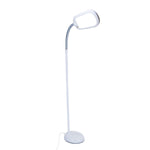



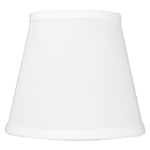









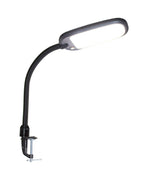












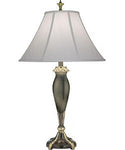










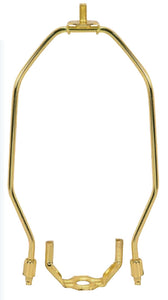









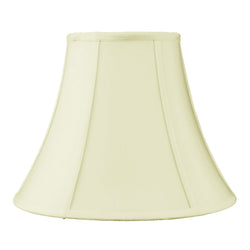




Comments